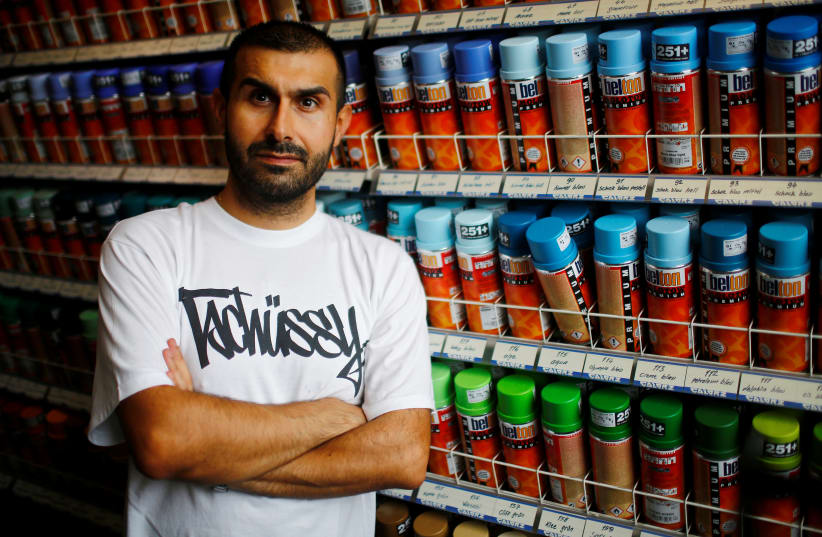"We as street artists wanted to send the message: you're abusing graffiti," said Omari, according to The Local de. "Graffiti's got nothing to do with racism - it's about bright colors and diverse backgrounds."Omari and his volunteer group teaches teen members how to practice turning Nazi swastikas into brand new works of art - such as Rubik's cubes, cats in a window, mosquitoes, rabbits and more."It's not hard to come up with ideas," said 17-year-old Klemens Reichelt. "I like it because I think swastikas don't belong in Berlin - it's a city open to the world and I want to defend that."According to Omari, the project started when a local resident came into his shop looking for paint to cover up a swastika spray painted on a children's playground."He didn't look like a graffiti artist, so I asked him why he wanted them and he said he needed them to cover up a swastika that had been sprayed on a children's playground," Omari said. "We were pretty shocked that someone had done that, especially here in Schöneberg."Omari, whose parents are of Lebanese descent, now says that neighborhoods report swastikas they find spray painted around the streets directly to the club instead of local authorities - allowing them to recreate over 20 swastikas since the project's beginning, turning them into "cheeky images."#PaintBack: Berlin activists turn Nazi hate graffiti into art https://t.co/j2AMF3ltMk via @Wort_EN pic.twitter.com/i2JfeLUBls
— AFP news agency (@AFP) August 2, 2017
Although not under the supervision of police, the members of the club get permission from local authorities and property owners before starting their transformative work - creating an initiative and hashtag that has spread to other cities across Germany."The last swastikas I had seen were more than 20 years ago, so this was a new, unpleasant development," Omari said. "Unfortunately, the zeitgeist changed in the last few years and we have to explain things to young people that actually [didn't happen] that long ago."We thought long and hard about how to react to such ugly sentiments, and then we said: we'll answer with humor and love," he said. "We chose sweet, cheeky images, most of them drawn by kids, so even beginners who aren't graffiti artists could reproduce them."this!#PAINTBACK covers hate with love. pic.twitter.com/s2H19ijaZL
— IMHIM (@ziyatong) September 7, 2016
There has been a 7% rise in "politically motivated crimes" in Germany since 2016, with many being identified as "propaganda offenses." The extremist movements began to rise in 2015 when German Chancellor Angela Merkel let in over a million asylum seekers from the Middle East that year, according to domestic intelligence agencies and The Local de.German graffiti artists are covering up swastikas with street art. #PaintBack pic.twitter.com/XSF1FcJ1e2
— Vocativ (@vocativ) September 5, 2017
